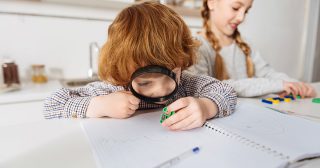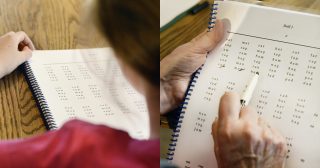Do Odors Help or Hinder Learning?
April 23rd, 2009I’ve written often about how we learn by seeing, hearing, and doing. But, we also learn through the olfactory system, smell.
In fact, smell actually plays an intricate part of our lives, of our sensory world, in the way we act. The process of recognition of a place is accomplished by our sense of smell. Think about this for a minute. The dentist’s office has certain smells related to it, so does the doctor’s office. Our homes smell wonderfully inviting when we’ve been baking or cooking a delicious dinner. We like to be in our homes when they smell good. A movie theater has another smell, as does a candy store. On the other hand, there are places we don’t enjoy being at as much, due to the odors. For instance a locker room after a sports event can be full of odors we don’t want to be near.
So, what does this have to do with learning? Our sense of smell adds an additional component to learning; it incorporates another sense so the brain is activated with an emotional and biological stimulus. Any time our brain is activated in multiple ways learning is affected, either positively or negatively.
Classrooms can have a variety of odors in them. Most of the time they are good odors. But, sometimes they aren’t. For example, when a classroom has just had new carpeting put in, there is usually a pretty noxious odor from the make-up of the carpet. Some severe educational consequences can occur due to this.
When the olfactory system is inundated with noxious odors such as formaldehyde that is out-gassing from carpet, children can suffer health, mood, and behavior problems that undermine school performance and productivity. Children can become allergic to their classrooms from carpet out-gassing.
This actually happened to my daughter when she was in the 4th grade. Her class was moved into a new portable classroom during the second month of the school year. The carpet did not have time to ‘outgas’. My daughter came home every day with uncontrollable coughing. She would get some relief at home by morning, and go back to school. By the time she came home again she was worse than when she left in the morning. I took her into the doctor after the 2nd day and then every day for an additional 3 days. We couldn’t figure out what was going on. So I went with her to school to see if I could see anything there that was causing the problem. Upon opening the classroom door I almost keeled over. The odor was horrific! And, at that time I was an asthmatic. I immediately started wheezing. I knew what the problem was.
So, we had to educate the school about the problem. We actually gave some solutions to help the carpet odor dissipate quickly. Unfortunately, they didn’t quite follow the suggestion [sprinkling the carpet every day after school with baking soda and then vacuuming it up every morning before school]. Instead they placed an open box of baking soda in the classroom. So my daughter ended up wearing a mask whenever she was in the classroom for nine weeks. After nine weeks the carpet odor had finally neutralized and she didn’t need to spend her days wearing a max.
The reason I’m sharing this is not so much what happened to my daughter, because she had an extreme reaction to the carpet out-gassing. But the rest of the class was also affected. The absentee rate of students and the teacher in that class due to respiratory problems was higher during that time period than the rest of the school. The behavior of the students in the class during that time frame was also awful. So did maximum learning take place during that time? Of course not.
Other environmental issues that can affect learning
Children can even become allergic their schools when construction is going on from all the molds that are stirred up during the construction. Also classroom pets can create havoc with children. Sometimes children don’t even know they have an allergy to pet dander and they end up being stuffed up in the classroom, which affects their ability to hear clearly. Some children respond to pet dander by becoming restless or irritable. So, you want to check and see if the classroom has a pet. Sometimes the behavior problem you child is having is NOT due to their not following directions, but is due to being allergic to pet dander from the class guinea pig.
So, when we are looking to create an optimal learning place for our children, let’s keep in mind it’s not just the hearing, seeing, and doing. It’s also the smells we smell that lead us to places where we feel good and safe and secure. When we feel good, safe, and secure, we learn with ease. So, let’s create good smelling classrooms to help our children thrive in learning situations!
Learn about the 3 roadblocks to reading, writing, and math success.
Bonnie Terry, M. Ed., BCET
































